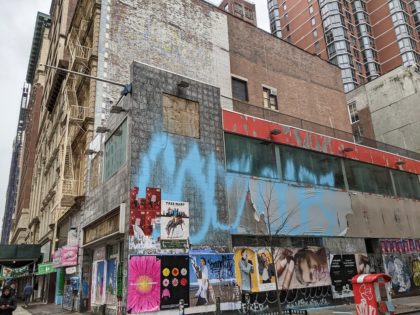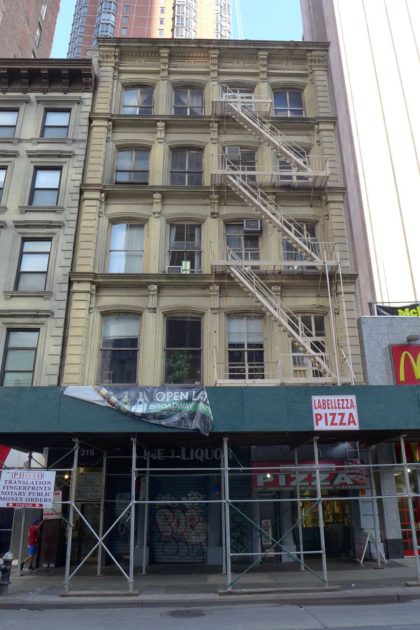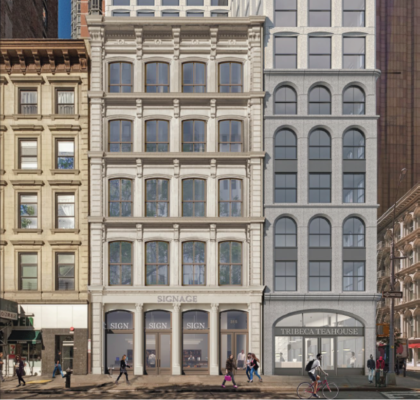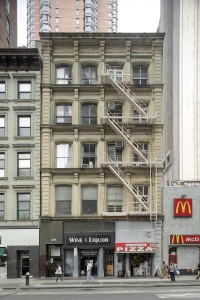
Thanks to G. for sending me this listing: The property on the southwest corner of Thomas and Broadway – a real eyesore that is home to the former McDonald’s and a city landmark “business palace” that once housed Hagstrom Maps – is for sale. This is a bit disappointing, as I was really hoping that United American Land, which had a development proposal through the Landmarks Commission, would have moved forward with its plan for this sad corner. But hopefully this sparks something.
They call it 2 Thomas, but the building is actually 315-317 Broadway, a 6,833-square-foot property on the southwest corner of Broadway and Thomas. The five-story cast iron and marble building at 315 Broadway, the south side of the property, has been a city landmark since 2016 (I’ve included an excerpt from the designation report below).

(United American Land also owns 319 Broadway across the street and 415 Broadway, the Art Deco bank building on the southwest corner of Canal; and is currently developing 277 Canal.)

The entire project was approved by the Landmarks Commission back in 2020. Back then, the plan was to preserve 315 Broadway and add a 20-story building behind it, and then build a 14-story building on the corner. The site, with an inclusionary housing bonus, can be 7,400 square feet.
The 315 Broadway Building is a palazzo-inspired commercial and loft building of the type that once lined Broadway and characterized the streetscape of prewar New York. Built in early 1861 by retired linen merchant Thomas Suffern as a speculative investment, 315 Broadway is a fine example of the commercial palaces that were built in the 1850s and 1860s throughout the dry goods wholesale district now known as Tribeca.

315 Broadway is notable for its structural clarity, imaginative detailing, and ornamentation. The five-story building features a marble facade with rusticated corner pillars and corbel cornices, inset cast iron columns on pedestal bases, and a cast iron storefront that is currently partially obscured. In Manhattan, the palazzo-inspired store and loft was first brought to New York by architects Joseph Trench and John Butler Snook in the A.T. Stewart Store (1845-1846), an instant attraction and enormous commercial success that set a precedent for stone-clad stores and lofts throughout Tribeca.
The Italian Renaissance palazzo was considered a particularly suitable model for commercial buildings because of its association with merchant princes. Few of these commercial palaces still exist on Broadway south of Franklin Street. 315 Broadway has been leased by dozens of tenants since its construction, including Hartley & Graham Arms and Ammunition and its subsidiary Remington Arms Company from 1892 to 1912, and Hagstrom Company, Inc., a cartography and publishing company that designed and printed the official New York City subway map during its lease from 1943 to 1956.
